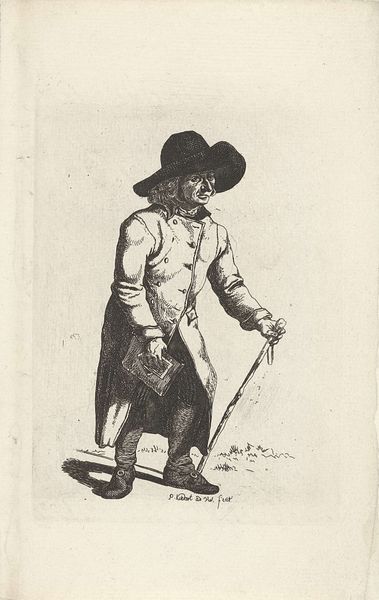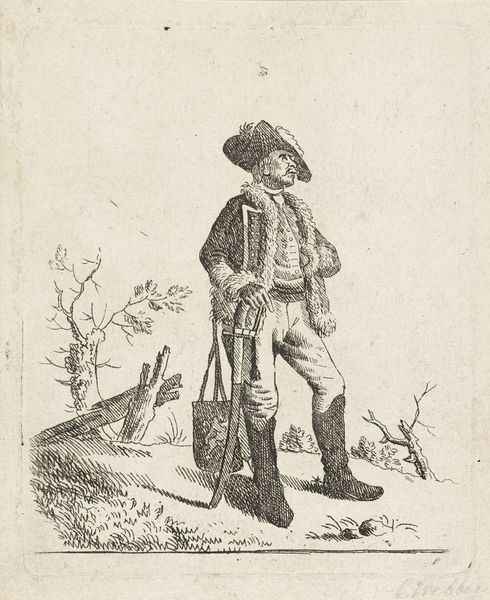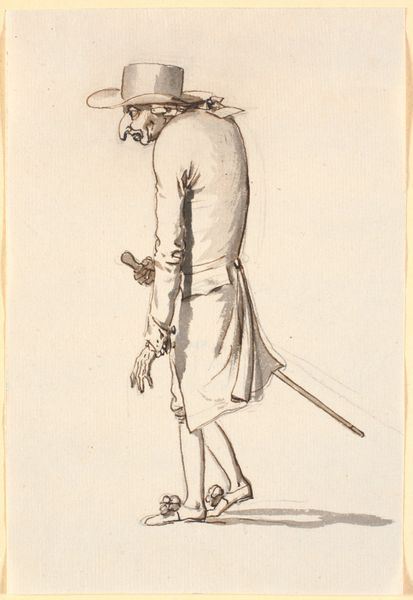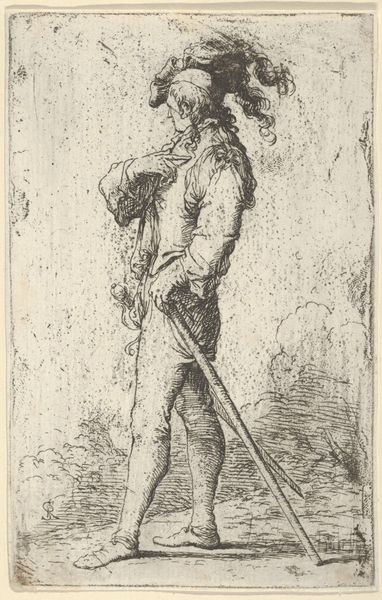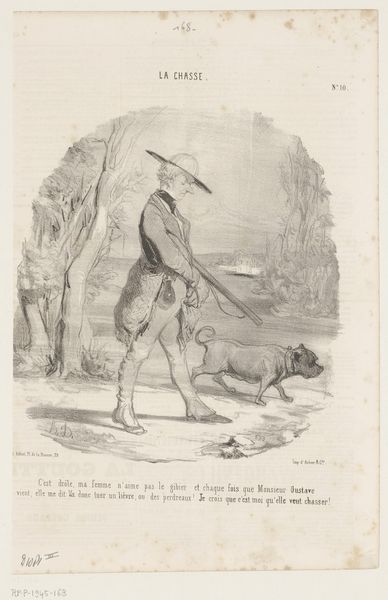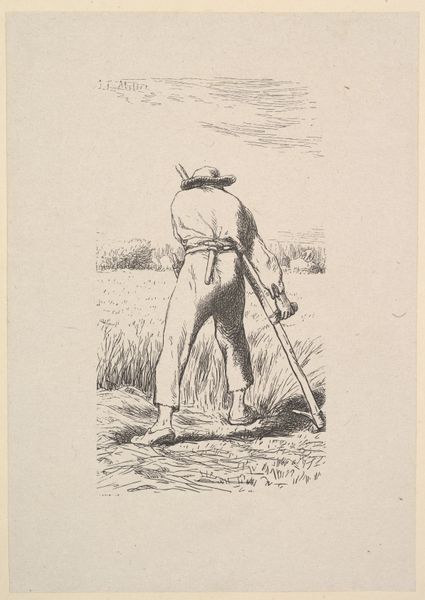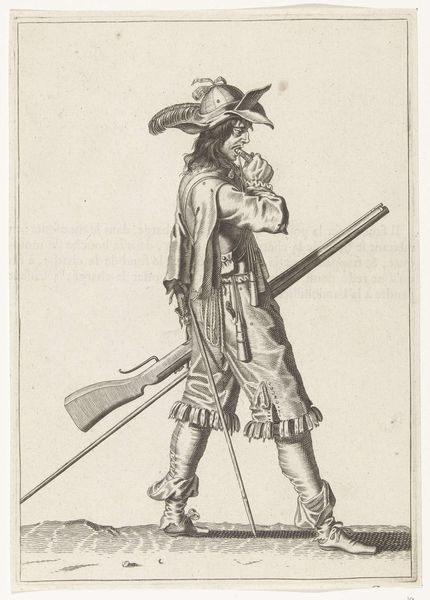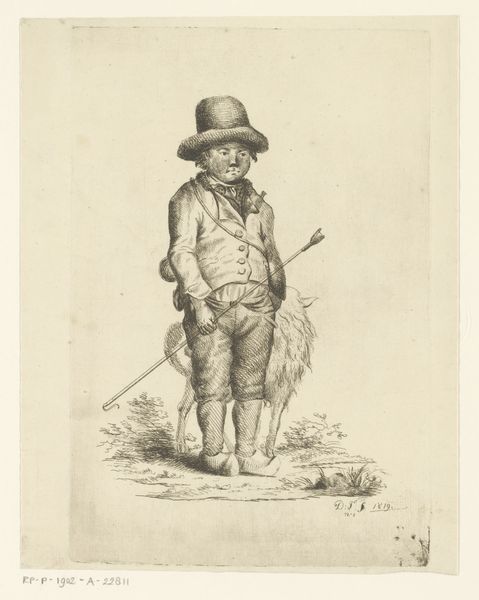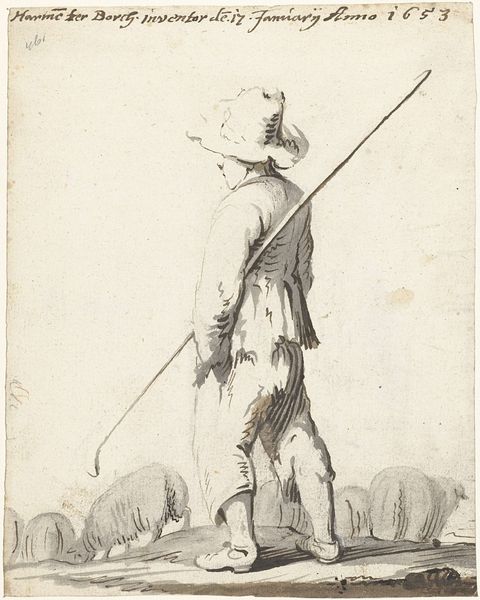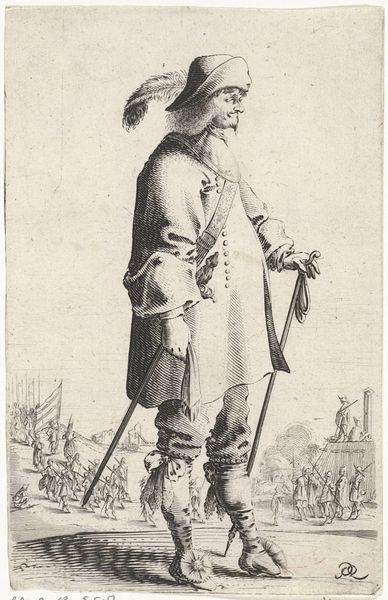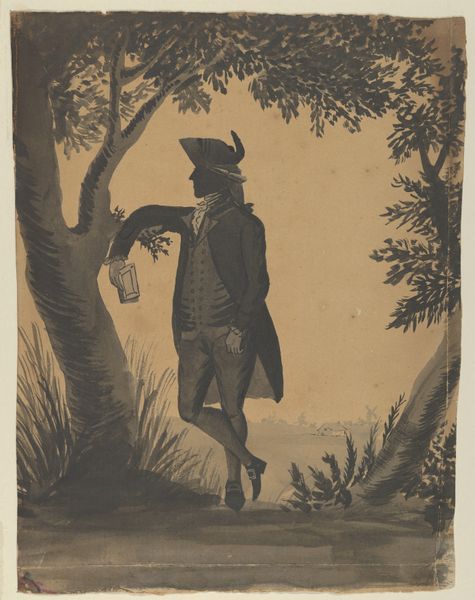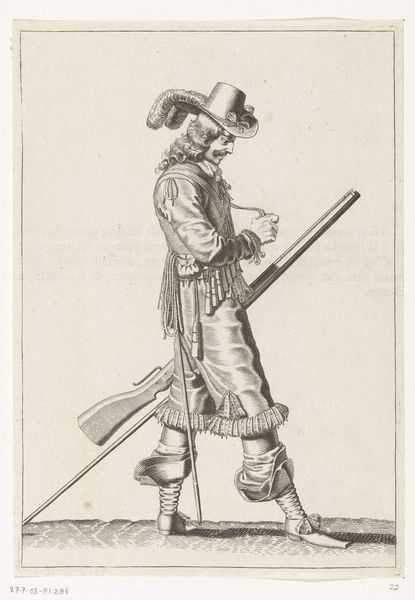
Dimensions: sheet: 9 1/2 x 6 11/16 in. (24.2 x 17 cm)
Copyright: Public Domain
Editor: Here we have "Peasant Crossing Water," a print, an engraving really, made by William Wynne Ryland in 1786. There's such quietness about this figure wading through the water. It's simple, stark. What elements stand out to you? Curator: It's the line work itself that dictates the reading of this engraving. Note how the density of the lines informs the tonal values: the darker areas suggesting depth and shadow versus the sparse, almost ethereal rendering of the sky. What do you make of the figure's positioning within the frame? Editor: He's front and center, but sort of hunched over, maybe weary. His placement gives weight to his movement in the landscape. The fact that his feet are in water underscores this. Is that significant from a formalist perspective? Curator: Indeed. Consider how the engraver manipulates line to simulate the texture of water, creating horizontal rhythms that contrast sharply with the verticality of the reeds. That very contrast draws your eye to consider how the man exists within nature: does he overcome it or coexist with it? What’s your reading? Editor: He seems quite absorbed by it. Almost disappearing into the marsh. It feels intimate despite being just an engraving. Curator: Precisely. And in such 'genre painting', it is precisely the *how* that delivers us to *what* is felt or thought by the artist, a negotiation, if you will, between subject and art. Editor: That's a great point. I'll look at engravings much differently from now on, appreciating that careful composition. Curator: An attention to the formal aspects opens worlds otherwise left unexplored.
Comments
No comments
Be the first to comment and join the conversation on the ultimate creative platform.
